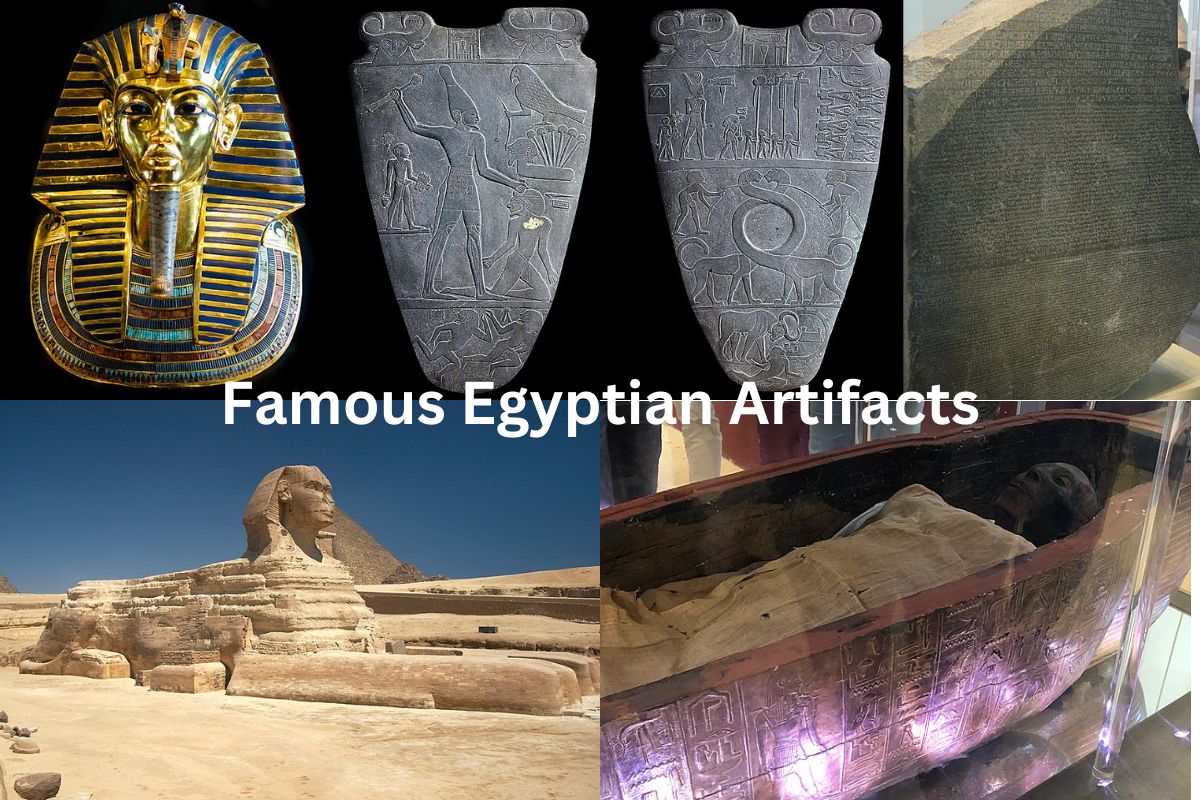Egyptian artifacts are objects created by the ancient Egyptians that provide insight into their culture, religion, and daily life.
The ancient Egyptians created many amazing artifacts that have survived thousands of years and are still admired today for their beauty and intricate details. These artifacts include statues, jewelry, pottery, furniture, tombs, and temples.
Egyptian artifacts are important not only for their aesthetic value but also for the information they provide about the history and culture of ancient Egypt. They help us understand the religious beliefs, social hierarchy, and daily life of the people who lived in this ancient civilization.
Some of the most famous Egyptian artifacts include:
- The Sphinx
- King Tutankhamun’s Golden Mask
- The Rosetta Stone
- Narmer Palette
- The Book of the Dead
These artifacts are not only important to Egypt’s history but to world history as well, as they provide a glimpse into one of the world’s oldest and most fascinating civilizations.
Famous Egyptian Artifacts
1. Rosetta Stone
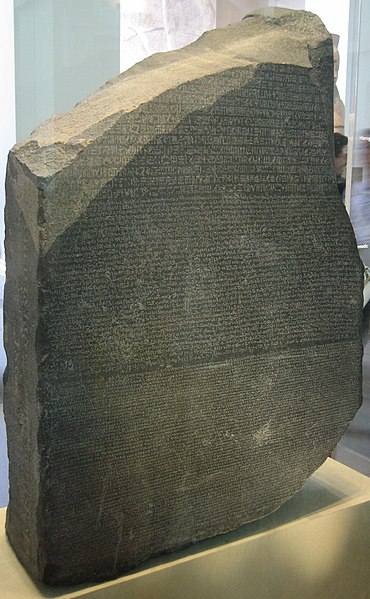
The Rosetta Stone is a granodiorite stele inscribed with a decree issued at Memphis, Egypt in 196 BC on behalf of King Ptolemy V Epiphanes.
Also Read: Rosetta Stone Facts
The decree appears in three scripts: the upper text is in Ancient Egyptian hieroglyphs, the middle text is in Ancient Egyptian Demotic script, and the lower text is in Ancient Greek.
The stone was discovered by a French soldier in 1799 during the Napoleonic campaign in Egypt, and it became famous because it was the key to unlocking the mysteries of Egyptian hieroglyphs.
Also Read: Hieroglyphics Facts
In 1822, French scholar Jean-François Champollion used the Greek inscription on the Rosetta Stone to decipher hieroglyphics, opening up the world of ancient Egyptian history and culture to modern scholars.
The Rosetta Stone is now on display at the British Museum in London, where it is one of the most popular and important artifacts in their collection.
2. Great Sphinx of Giza
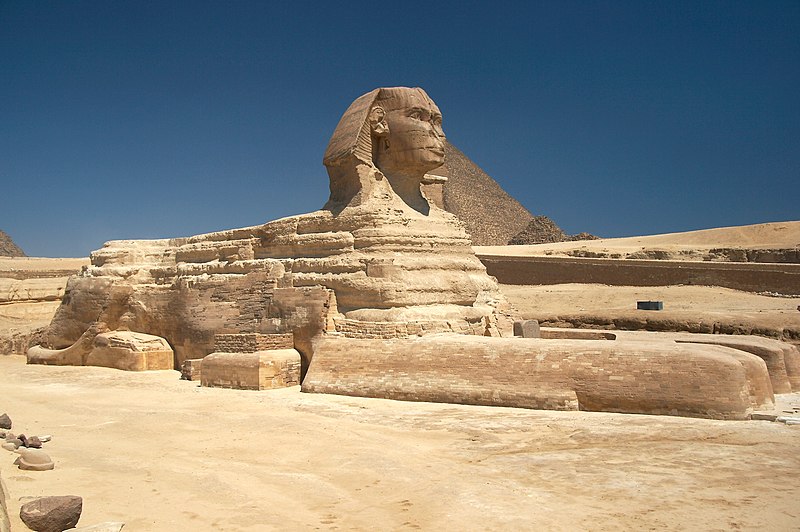
The Great Sphinx of Giza is a large limestone statue of a reclining sphinx, a mythical creature with the head of a human and the body of a lion. It is located on the Giza Plateau, near the Great Pyramids of Giza, in Egypt.
The Sphinx measures about 73 meters (240 feet) long and 20 meters (66 feet) tall and is believed to have been built during the reign of Pharaoh Khafre, who ruled Egypt from 2558 to 2532 BC.
The Sphinx is a symbol of ancient Egyptian royalty, power, and wisdom. The head of the Sphinx is believed to depict the Pharaoh Khafre, who was considered a god by the ancient Egyptians. The Sphinx has also been associated with the sun god, Ra, and was believed to protect the pharaohs and their temples.
The Sphinx has undergone many restorations and repairs over the years, including a major restoration in the early 20th century to repair damage caused by weathering and erosion.
Today, the Sphinx remains a popular tourist attraction, and it is one of the most recognizable symbols of ancient Egyptian civilization.
3. Tutankhamun’s Mask
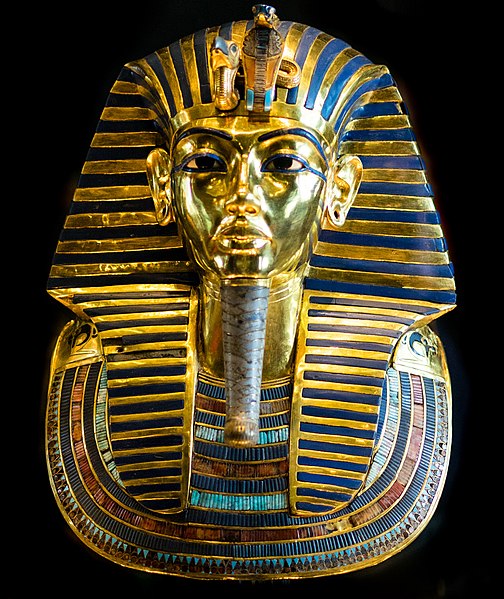
Tutankhamun’s Mask is a funerary mask made of solid gold that was discovered in the tomb of the young Pharaoh Tutankhamun in the Valley of the Kings, Luxor, Egypt.
The mask is 54 cm (21 inches) tall and weighs about 11 kg (24 pounds). It is believed to have been crafted in the 14th century BC during the period of the New Kingdom of Ancient Egypt.
The mask is an extraordinary example of ancient Egyptian art, known for its exquisite beauty and intricate details. The face of the mask is made of solid gold and is inlaid with precious stones, such as lapis lazuli and turquoise, to create the features of the young pharaoh.
The mask also features a striped headcloth, with a vulture and a cobra, the two symbols of Upper and Lower Egypt, respectively.
The mask was designed to protect the face of the deceased pharaoh in the afterlife, as it was believed that the soul of the deceased would need its body to continue living in the afterlife.
The mask is now one of the most famous and popular artifacts of ancient Egypt, and it is on display at the Egyptian Museum in Cairo, where it is one of the museum’s most prized possessions.
4. Narmer Palette
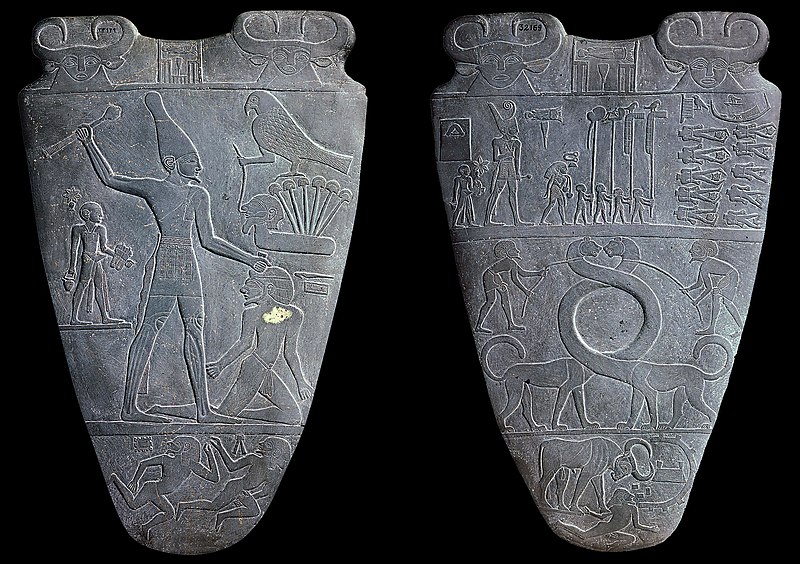
The Narmer Palette is a ceremonial tablet made of schist stone that was discovered in 1898 in the ancient Egyptian city of Hierakonpolis.
The palette is believed to date back to the Early Dynastic Period of Ancient Egypt, around 3100 BC, and it is considered to be one of the most famous artifacts in the history of ancient Egypt.
The Narmer Palette is about 64 cm (25 inches) tall and is carved on both sides with scenes depicting the unification of Upper and Lower Egypt under the pharaoh Narmer.
The palette shows Narmer wearing the crown of Upper Egypt on one side and the crown of Lower Egypt on the other, with various scenes of battle and triumph over enemies.
The palette is a significant artifact because it is believed to be one of the earliest depictions of the pharaoh as a god-king, with divine power over the people of Egypt.
The unification of Upper and Lower Egypt was also a significant event in Egyptian history, and the Narmer Palette serves as a symbol of this important achievement.
The Narmer Palette is now on display at the Egyptian Museum in Cairo, where it is considered to be one of the museum’s most important and prized artifacts. It provides valuable insights into the history, religion, and culture of ancient Egypt, and it is an important part of the country’s rich cultural heritage.
5. The Book of the Dead
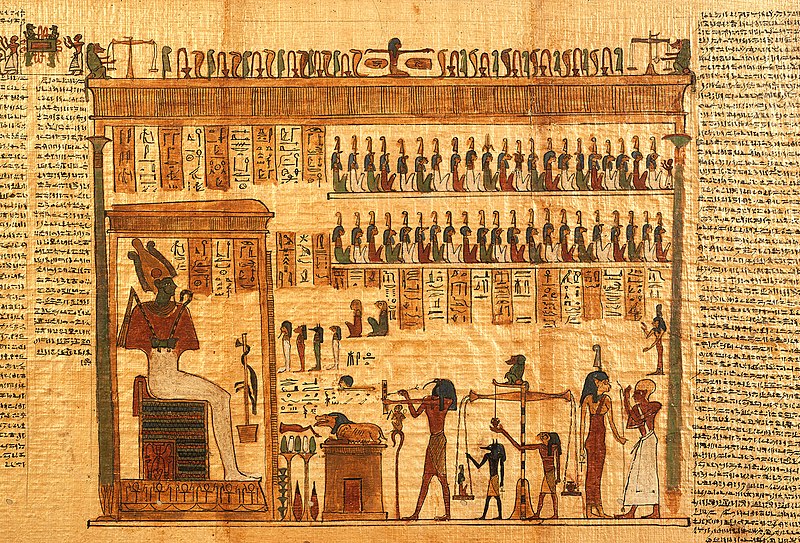
The Book of the Dead is a collection of ancient Egyptian funerary texts, consisting of spells and prayers designed to guide the soul of the deceased through the afterlife. The book is believed to have been written during the New Kingdom period of Ancient Egypt, around 1550-50 BC.
The Book of the Dead was intended to be used by the deceased in the afterlife, and it was often buried with them in their tombs. The texts in the book provide guidance on how to navigate the afterlife and how to pass through the various trials and tribulations that the soul might encounter on its journey to the afterlife.
The Book of the Dead includes a wide range of spells and prayers, many of which were designed to help the deceased overcome obstacles and challenges in the afterlife.
These included spells to protect the body from decay, to ensure that the soul was able to pass through the various gates and checkpoints in the afterlife, and to provide the soul with food, water, and other necessities.
The Book of the Dead is now considered to be one of the most important artifacts of ancient Egyptian religion and culture. Many examples of the book have survived to the present day, and they provide valuable insights into the beliefs and practices of ancient Egyptians.
The book has been studied by scholars for centuries, and it remains a fascinating and mysterious part of Egyptian history.
6. The Narmer Macehead
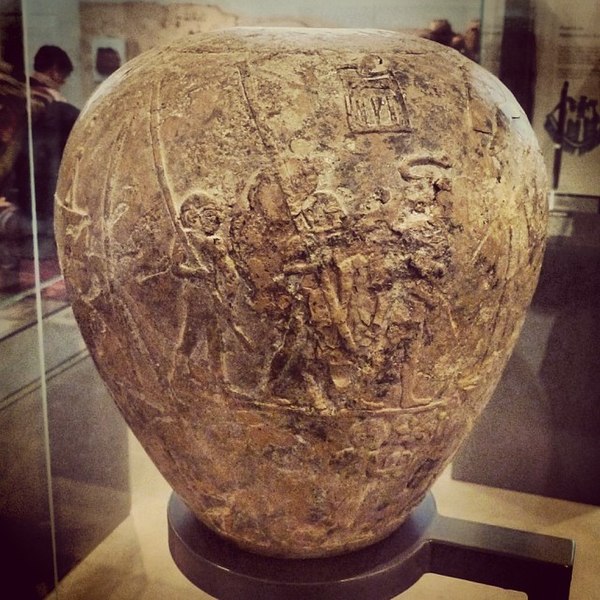
The Narmer Macehead is an ancient Egyptian artifact made of siltstone that was discovered in the Temple of Horus at Nekhen (Hierakonpolis) in Upper Egypt.
The macehead dates back to the Early Dynastic Period of Ancient Egypt, around 3100-2900 BC, and it is considered to be one of the most important artifacts of this period.
The Narmer Macehead is about 25 cm (10 inches) high and depicts the pharaoh Narmer, also known as Menes, wearing the crown of Upper Egypt and holding a mace.
The reverse side of the macehead shows Narmer wearing the crown of Lower Egypt and smiting an enemy with the mace. The image is surrounded by hieroglyphs that provide information about the pharaoh’s name, title, and achievements.
The Narmer Macehead is significant because it provides valuable insights into the early history and mythology of ancient Egypt. The images on the macehead show the pharaoh Narmer as a powerful and victorious ruler, who was able to unite Upper and Lower Egypt and establish the first dynasty of pharaohs.
The Narmer Macehead is now on display at the Ashmolean Museum in Oxford, England, where it is considered to be one of the most important artifacts in the museum’s collection.
It is a testament to the creativity, artistry, and power of the ancient Egyptian civilization, and it remains a fascinating and important part of Egypt’s cultural heritage.
7. The Saqqara bird
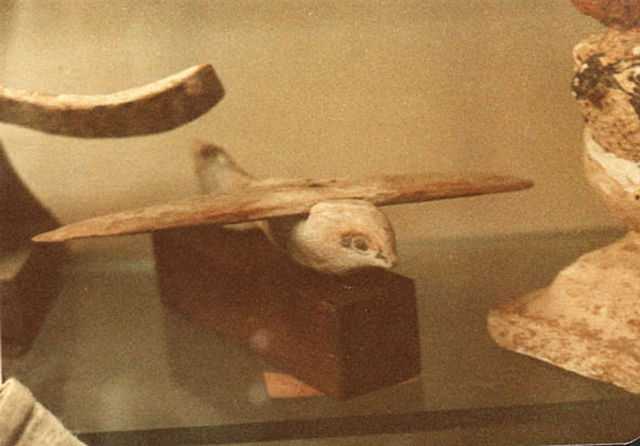
The Saqqara bird is a wooden artifact discovered in the Saqqara necropolis in Egypt in 1898. The artifact is believed to date back to the Predynastic Period of Ancient Egypt, around 2000-3000 BC.
The Saqqara bird is a small wooden model of a bird, approximately 18 cm (7 inches) long and 7.5 cm (3 inches) high, and it is made of sycamore wood.
The Saqqara bird is significant because it has been suggested that it may have been an early model of a glider or an early attempt at flight by the ancient Egyptians.
The design of the bird includes wings, a tail, and a pointed beak, and some researchers have suggested that the bird may have been designed to fly or glide through the air.
However, the true purpose of the Saqqara bird remains a subject of debate among scholars, and some have suggested that it may have had a religious or symbolic significance instead.
The bird’s design is similar to the falcon, which was associated with the god Horus in ancient Egyptian religion, and it may have been a votive offering or a representation of the god.
The Saqqara bird is now on display at the Museum of Egyptian Antiquities in Cairo, where it is one of the museum’s most prized possessions. It is a fascinating and mysterious artifact that continues to capture the imaginations of researchers and visitors alike.
8. The Turin King List
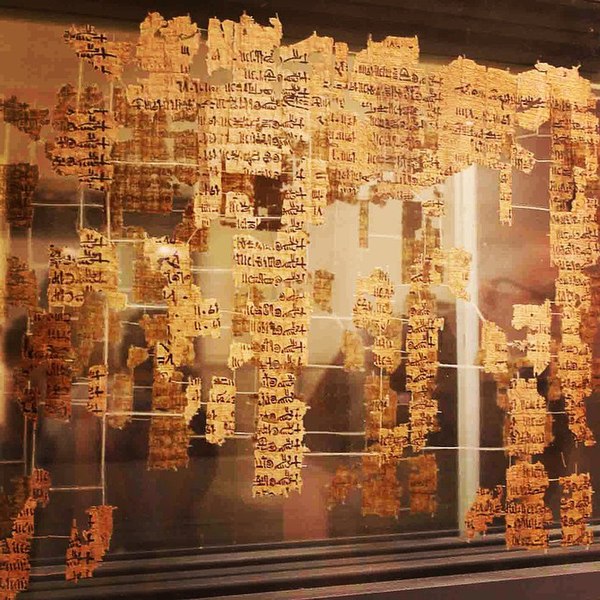
The Turin King List is an ancient Egyptian papyrus that lists the names of many of the pharaohs who ruled over Egypt during the Old Kingdom and the First Intermediate Period.
The papyrus is believed to date back to the 19th Dynasty of the New Kingdom, around 1200 BC, and it is now housed in the Museo Egizio in Turin, Italy.
The Turin King List provides valuable information about the succession of pharaohs who ruled over Egypt during the early periods of its history. The papyrus lists the names of the pharaohs in chronological order, along with the length of their reigns and the names of their predecessors and successors.
The Turin King List is significant because it provides a comprehensive and detailed record of the pharaohs who ruled over Egypt during the early periods of its history.
The list includes many of the most famous and important pharaohs, such as Khufu, the builder of the Great Pyramid of Giza, and Tutankhamun, the young pharaoh whose tomb was discovered in the Valley of the Kings.
The Turin King List is a testament to the achievements and power of the ancient Egyptian civilization, and it remains an important source of information for researchers and scholars today. It provides valuable insights into the history and culture of one of the world’s most fascinating civilizations.
9. The Luxor Obelisk
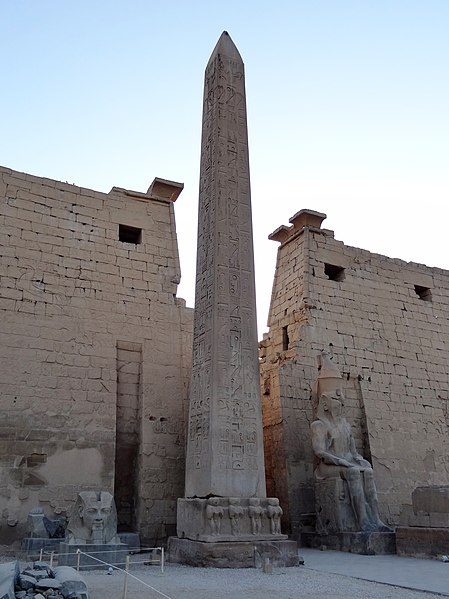
The Luxor Obelisk is a large ancient Egyptian obelisk located in the Place de la Concorde in Paris, France. The obelisk was originally erected in Luxor, Egypt during the reign of Pharaoh Ramses II in the 13th century BC.
The Luxor Obelisk is made of pink granite and stands about 23 meters (75 feet) tall, including its base. The obelisk is covered with hieroglyphics that commemorate the military campaigns and achievements of Ramses II.
In the 19th century, the Luxor Obelisk was given as a gift to France by the Egyptian government, and it was transported to Paris in 1833. The obelisk was erected in the Place de la Concorde, where it still stands today as one of the most recognizable landmarks in the city.
The Luxor Obelisk is significant because it provides a unique and fascinating connection between ancient Egyptian history and modern European culture.
The obelisk is a testament to the power and achievements of the ancient Egyptian civilization, and it serves as a reminder of the important cultural and historical links between Egypt and the rest of the world.
10. The Cairo Museum Mummies
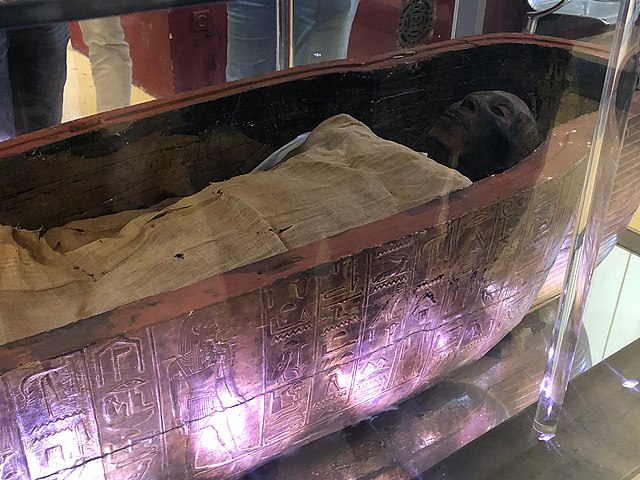
The Cairo Museum Mummies are a collection of ancient Egyptian mummies housed in the Egyptian Museum in Cairo, Egypt. The mummies date back to various periods of ancient Egyptian history, ranging from the Old Kingdom to the Late Period.
The Cairo Museum Mummies are significant because they provide valuable insights into the burial practices, religious beliefs, and daily life of the ancient Egyptians. Many of the mummies are elaborately decorated and preserved, with intricate wrappings and jewelry that reflect the wealth and status of the deceased.
The mummies include some of the most famous and well-preserved examples of ancient Egyptian mummification, such as the mummy of Ramses II, one of Egypt’s most famous pharaohs.
Other notable mummies include the mummies of Hatshepsut, an influential female pharaoh, and Tutankhamun, the young pharaoh whose tomb was discovered in the Valley of the Kings.
The Cairo Museum Mummies have been studied and analyzed by researchers and scholars for centuries, and they continue to provide valuable information about the ancient Egyptian civilization.
The mummies are also a popular tourist attraction, and they attract visitors from around the world who are interested in the history and culture of ancient Egypt.
11. Valley of the Kings
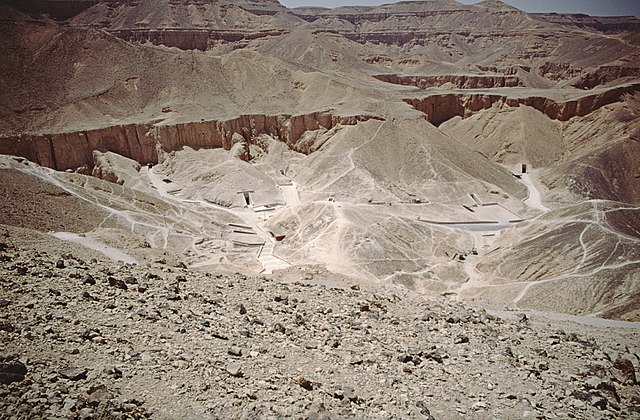
The Valley of the Kings is a burial site located on the west bank of the Nile River in Luxor, Egypt. The valley served as a burial site for pharaohs and other members of the royal family during the New Kingdom period of Ancient Egypt, from approximately 1539 BC to 1075 BC.
Also Read: Valley of the Kings Facts
The Valley of the Kings is significant because it contains some of the most elaborate and well-preserved tombs of ancient Egyptian pharaohs, including the tomb of Tutankhamun, which was discovered by archaeologist Howard Carter in 1922.
The valley also contains the tombs of other famous pharaohs, such as Ramses II, Seti I, and Thutmose III.
The tombs in the Valley of the Kings are decorated with intricate hieroglyphics, colorful paintings, and intricate carvings that depict scenes from the life of the pharaoh and their journey through the afterlife.
Many of the tombs contain treasure and other valuable artifacts, which were buried with the pharaoh to provide for them in the afterlife.
The Valley of the Kings is now a popular tourist attraction, and it is considered to be one of the most important archaeological sites in the world. It provides valuable insights into the history and culture of ancient Egypt, and it remains a testament to the power and achievements of one of the world’s greatest civilizations.
12. The Colossi of Memnon
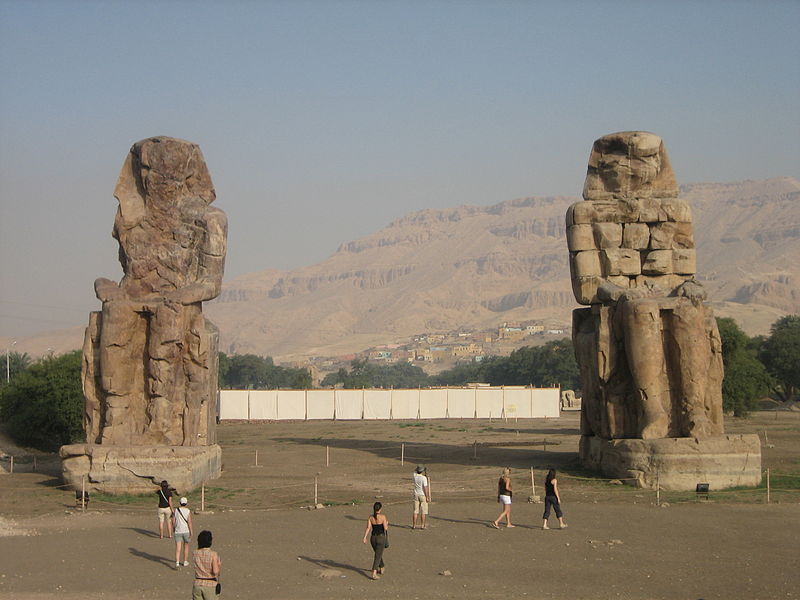
The Colossi of Memnon are two massive stone statues of Pharaoh Amenhotep III, located on the west bank of the Nile River in Luxor, Egypt. The statues are about 18 meters (60 feet) tall and weigh around 720 tons each.
The Colossi of Memnon are significant because they are some of the few remaining relics of the temple of Amenhotep III, which was once one of the largest and most impressive temples in ancient Egypt. The statues were originally located at the entrance of the temple and were meant to guard the pharaoh’s mortuary temple.
Over time, the Colossi of Memnon became famous for a mysterious phenomenon. The statues were said to produce a musical sound at sunrise, which was believed to be the voice of Memnon, the mythical Greek king who was killed by Achilles during the Trojan War.
The sound was actually caused by changes in temperature and humidity, but it became a popular tourist attraction in ancient times, and many visitors came to hear the “singing” statues.
Today, the Colossi of Memnon are one of the most popular tourist attractions in Luxor. They remain a testament to the power and grandeur of ancient Egypt, and they provide valuable insights into the religion, art, and architecture of one of the world’s greatest civilizations.
13. The Obelisk of Hatshepsut
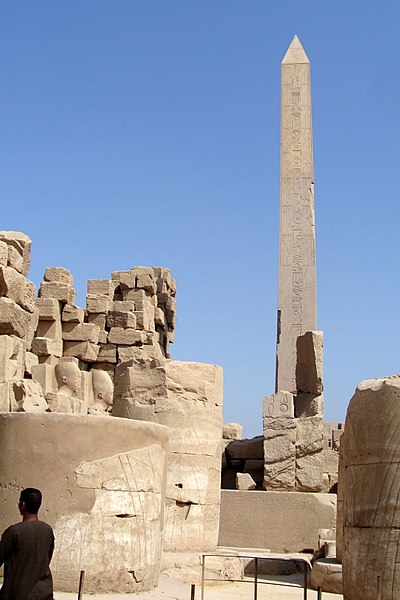
The Obelisk of Hatshepsut is an ancient Egyptian obelisk located in the Karnak Temple Complex in Luxor, Egypt. The obelisk was erected during the reign of Queen Hatshepsut in the 15th century BC and is considered to be one of the largest and most impressive obelisks in ancient Egypt.
The Obelisk of Hatshepsut is made of red granite and stands about 29 meters (95 feet) tall, including its base. The obelisk is covered with hieroglyphics and scenes from the life of Queen Hatshepsut, including her birth, coronation, and various achievements during her reign.
The Obelisk of Hatshepsut is significant because it provides valuable insights into the life and reign of one of the most important female pharaohs in ancient Egypt. Hatshepsut was known for her ambitious building projects and her efforts to expand trade and diplomacy with other nations.
The obelisk is also significant because it reflects the religious and cultural beliefs of ancient Egyptians, who considered obelisks to be powerful symbols of the sun god Ra and his life-giving power.
Today, the Obelisk of Hatshepsut is one of the most popular attractions in the Karnak Temple Complex, and it remains a testament to the power and achievements of ancient Egypt.
